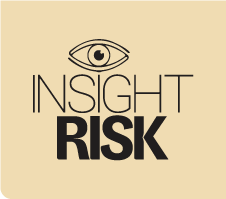Insight Risk Systems: Leading Indicators
ENHANCING YOUR RISK MANAGEMENT PREDICTIVE ANALYTICS: WHAT IS A LEADING INDICATOR ANYWAY?
WHAT ARE LEADING INDICATORS?
High consequence, catastrophic incidents occur if you have loss of control/containment, failures in your layers of controls / barriers, unsafe acts and conditions, and weaknesses in your risk management systems, culture, and competencies. Since high consequence incidents occur rarely, we need to monitor the more frequent, no consequence ‘weak signals’ – as leading indicators – so that we can fix these weaknesses and prevent the higher consequence incidents.
The relative frequency of these leading indicators for workplace injuries/fatalities is often depicted as a pyramid (see inset pyramid at right). Process safety and operational risk management extends the apex with more significant consequences and the base with more measures of unsafe acts and latent systemic factors.
A GOOD LEADING INDICATOR MUST:
- Be valid, useful, and predictive – to anticipate, prevent, or eliminate risks and losses
- Positively monitor and evaluate achievable performance of what people do, not what they fail to do
- Communicate results effectively to allow people (management and workers) to see small improvements in performance
- Offer timely and frequent feedback to motivate safe behaviour, personal commitment, and continuous improvement
- Make good use of data already collected to achieve risk management and safety goals
- Collect new data to improve elements of your risk management system or to control a hazard recently identified
To improve your company’s management of risk, predictive measures using leading indicators must become embedded in your management systems. However, only 32% of companies use leading indicators and just 11% fully use technology.1
Using our expertise in risk, strategy, and machine learning; decades of operational, regulatory, and research experience in energy, mining, construction, and transportation with serious incidents and fatalities, we:
- Insightfully combine advanced data analytics and machine learning, process safety and risk management methods, and strategy and human factors analysis.
- Leverage data fusion techniques to analyze your existing data from various sources – inspections, incidents, operational performance, employee surveys – and use theory-informed machine learning methods to ‘see’ missing leading indicators (the weak signals) to help you understand and improve your risk management systems.
- Currently we offer these as a service, but can help automate data cleaning, analysis, data-fusion, and visualization processing pipelines, so that these can be offered as a product and bundled with MS Power BI or ERP software.
To discuss how you can analyse the gaps in your company’s risk management system, contact us: Dr. Lianne Lefsrud, P.Eng., CEO, Insight Risk Systems. 780.951.3455 or lianne.lefsrud@insightrisksystems.com
You can download a PDF version of this page by clicking the button below. This PDF contains the same content currently displayed on the webpage, making it easy to save, print, or share offline.


